After a very rough journey last night, I awoke and felt very sleepy and found it hard to get up for breakfast, but at 7.30am the bell rings until you come downstairs. I think I over slept a little as we had the guys knocking on the door to let us know it was ready. So we sauntered down and there were actually some nice pancake type things, along with the fruit, to keep me going. We had sailed from Santiago to Fernandina Island overnight which was about 12 hours, as it's the most westerly island it can only be reached by taking a cruise around the islands. I'd heard before we departed and while considering cruise options that you get to see more wildlife if you take a cruise around the westerly islands so was really looking forward to coming to Isabella and Fernandina. These are the youngest of the Galapagos islands and they have volcanic activity and are covered in black lava flow rocks.
Fernandina- Punta Espinoza
Once we'd had breakfast we took the dinghy over to the island and we had to land amongst the black lava rocks
. We got dropped off and were taking a hike around the peninsula of Punta Espinoza. The youngest of the Galapagos Islands, at around 1,000,000 years old, Fernandina remains on the hot spot that created all of the islands. It is considered to be an active shield volcano with a large caldera, although the caldera collapsed in 1968. Fernandina is the westernmost and third largest of the Galapagos Islands. The most recent eruptions were in 2005 and 2009. The Island's landscape is dominated by La Cumbre Volcano. The volcano's lava fields stretch all the way from the top of the volcano to the sea itself. The Galapagos National Park are determined to keep Fernandina as pristine and untouched by humans and other non-endemic creatures as possible. So, although the Island is literally teeming with bird and marine life, there is only one approved visitation spot on the Island- Punta Espinoza. As there is a lot of green algae on this island, there are many colonies of marine iguanas that live here, as this is what they eat. Sol said that the iguanas here are among the biggest in the world, and that's because they have plentiful amounts of the algae to survive on
. I am pretty sure that this is the island where David Attenborough filmed with the iguanas not Santiago where I first thought. I loved being on this island, I just wished that we had more time to wander around it, but you can only be on the island with your guide. We walked over the black volcanic rocks and admired all those iguanas basking in the sun. I got to see some of them spitting salt out, as they feed on the algae in the sea, it's too salty for them, so they have to get rid of the excess salt somehow. It was cool to watch them do this, as it comes out of the top of their head!
I could have easily stayed the whole day to watch the iguanas, but we had to press on and see more animals. I also saw some of them going swimming in a rock pool which was quite cool. We walked further around the designated path, as on these islands, you are only allowed to walk on the visitor sites and you cannot stray off the beaten track, especially on Fernandina Island. We saw more colonies of Iguanas, plenty of Sally Lightfoot Crabs, lava lizards, and even a little yellow warbler bird
. John takes the glory for the picture of this little bird.... he thinks he can win photographer of the year with the beauty! We were even taken to some bones of a washed up whale on the beach some 10 years ago. I think they keep them here just to show tourists to the island. Also there were crab shells from the Sally Lightfoot ones as they shed their shells in replacement for new ones. Sol told us we could pick them up, so I got to hold one.
Another main attraction on this island is the Galápagos cormorant bird, which is endemic to the Galápagos Islands as it's the only species of flightless cormorant in the world. These birds once flew, but adapted to their environment and, over time, lost their flying ability – which really is evolution of the Galápagos; “survival of the fittest.” They are safe on the ground without flying largely because they have no natural land-based predators. They can swim for food close to the shoreline and eat fish. There are about 27 species of cormorant birds throughout the world, which I didn't know before
. We came very close to their nesting site and got to see these birds really close up, I wanted to take some good pictures of these birds and thought I forgot the big lens, but when we checked in our bag, luckily we'd remembered to pack it, so I changed the lens and got some close-up pictures of this bird. It was amazing to see these birds just walking around the ground and knowing that they had wings but couldn't fly as they didn't need to was breathtaking to see. The wings are not full with lots of feathers as they do not require these for survival, they just have a few feathers to keep clean. Most of the birds were constantly washing themselves, a bit like a cat! They also shake their wings when out of water to dry off what little feathers they have. I loved seeing the cormorants and will be sad to leave this island, but our morning hike was coming to an end and it was time to say goodbye to Fernandina and to go back for a bit of snorkelling around the island.
The dinghy came to pick us up from the rocks, which were quite slippery, due to the green algae in them. We boarded it carefully and went back to the ship, where we were greeted by the crew with juice, crisps and biscuits. Sol said the waters of Fernandina were suppose to be good for marine life, but cold water to snorkel in, so it was hopefully going to be a good session for snorkelling. We got ready and hopped back in the dinghy and only a few of us decided to snorkel as the waters were so cold
. It was one where we had to snorkel from the dinghy, Michelle decided not to do it as it was too cold for her but came along with us all. I was just preparing myself to get in, when she pushed me in the water, well I suppose it's a good way to do it as I'm a wimp, so would have taken me ages to go in. John being himself, decided to dive in head first in just swim shorts. In the water it was absolutely freezing cold so I didn't think I'd last that long in the water! John must have been colder than me tho. We started swimming around and soon came to see some marine iguanas feeding on the green algae under the water. I think we're so lucky to see them there right amongst us, going about their own business. While John went off ahead, I was further behind, I'm sure I saw a group of about 4 small sharks swimming near the sea bed. I couldn't tell you what type they were, perhaps white tip reef sharks? It's strange as I didn't panic or freak out or anything, I think I was just in awe that I had seen some. One of the other ladies in our group also saw them, so it wasn't just my imagination running away with me
. I also saw some more shoals of small fish, and a jellyfish which I did freak out at and turned back and swam away from it. Erica had told me earlier that she saw it and said if you see it, get away from it, so that's what I did. Should I have been more scared of the sharks than the jellyfish hmm! So it was another successful snorkel session and I was really getting the hang of it, apart from the cold waters! When we get to Asia, the waters will be warmer and I'll enjoy it there too. Once everyone was too cold to bear the water any longer, we all got back on the dinghy and got taken back to the Estrella del Mar.
We had more hot chocolate waiting for us, this seems to be a regular occurrence, a nice one at that! I could get used to this service. Then after this, it was time for lunch and afterwards we had more sailing, we are heading to Isabella for the next few days. This is the biggest island in the Galápagos. It's around a few hours of sailing to Isabella, so after lunch, we decided to sit on the top deck to sunbathe and take in the views while the boat was sailing during the day
. Whilst sailing, we could see the huge active volcanos on Isabella, one of them Sierra Negra we will be visiting tomorrow.
Isabella- Tagus Cove
Caleta Tagus is a well protected cove between two volcanic craters, which protect it from the open sea. It has been used for safe anchorage for pirates and buccaneers for up to 300 years. We were able to hike up to the top of the crater and walk along the top or the rim and up to one of the viewpoints of some lava flow from one of the volcanos. We took a short dinghy ride over to the island, we spotted some Galápagos penguins in the sea and also some brown pelicans on the rocks by the shore. Along a lot of the cliffs we noticed graffiti which had been written by many soldiers dating back to the 1930s, as they had been sent to the Galápagos Islands, Isabella in particular. They just wrote their names and dates of when they had been on the islands. This was before the Galápagos became a protected national park, it was a shame to see evidence of human destruction on the unspoilt islands
. Isabella was used as an army base for US soldiers, as we were to later find out.
The dinghy dropped us off and Sol said we'd have to swim to the island jokingly! So anyway, not swimming but walking, we headed up loads of steps to get to the top of the craters. I think if the older ladies came along, they wouldn't have been able to do this hike, well I was struggling up the steps let alone them! It was also hot and humid, so it was hard work. Once we were at the top, we were walking on flat ground for a while. As you were getting closer to the top, the lagoon was becoming more apparent, it was crystal clear blue water, but it was a salt water lake, so no animals lived there permanently, only the occasional fish would get brought in with the tide. We haven't seen any wildlife here yet, but the spectacular views by far make up for that. We walked to a higher viewpoint along some lava rocks, one where you could see Volcano Wolf, the highest volcano in the Galápagos at 5,600 feet
. Sol said that there are different species of giant tortoise living between the volcanos, but it is too dangerous for them to try and cross the volcano, so they live independently in between the different volcanos. When you get to the top of this lava flow, you can see for miles along Isabella. There were some nice rock formations there, so we all got some pictures nearby. On our way back down, we got a group picture of everyone with the lagoon in the background, well that was everyone who had come for today's hike. When down the bottom of the steps, we came across an injured sea lion, it had a cut on its face. You couldn't tell if I was an old wound, or a fresh one. I asked Sol if the animals are injured does a vet come and treat them, and she just said no it's natural. I thought that they would treat injured animals but from what she told us, they don't, which is a shame. She also said it could be an old scar as many of the male sea lions fight with each other to mark their territory. It upset me seeing it, as it looked like it was dying, hopefully I'm wrong and it was just resting
.
We were ready to be picked up by the dinghy as it was time to do some more snorkelling. I jumped back on board and got my wetsuit on. It was suppose to be cold water, perhaps colder than this morning, but there could be a chance that we see Galápagos penguins, so I had to take that chance. It was also another snorkel off the dinghy which was easier than swimming from the shore. I could have done with Michelle pushing me in the water again! I went in slowly and as I was going in, I saw loads of blue-footed boobies all along the cliffs. Some of the guys had already spotted a turtle so I swam around trying to find it, whist doing so, some sea lions swam right past me playing as they do. After that I saw the turtle and stayed close to where it was. The water was also freezing cold, and we only lasted about 15 minutes in the water. Just as I was about to come out of the water, a little penguin swam right past me. I felt so lucky to have seen this swim so close to me, as you can't usually see them as they are so quick! After this, I was definitely ready to come out of the water. We have one more day of snorkelling and I feel like I've seen a lot of marine life, so I'm glad I tired out snorkelling or I'd have missed out. When we got back to the boat we had another briefing for tomorrow and dinner. While we were sitting down at the briefing, the sea was so choppy and was making everyone feel sick as we'd started sailing once more. We had to sail a few hours to reach our next point on Isabella. I don't think we done much that evening, but I do remember throwing up and most of the other ladies also did. I am starting to want to be on dry land now.
Galápagos day 4- Fernandina and Isabella Islands
Thursday, August 22, 2013
 Galapagos Islands, Ecuador
Galapagos Islands, Ecuador
Other Entries
-
3Connecting flight Madrid-Bogota
Jul 1241 days prior Madrid, Spain and Canary Islandsphoto_camera0videocam 0comment 0
Madrid, Spain and Canary Islandsphoto_camera0videocam 0comment 0 -
4Bogota colder than England....
Jul 1340 days prior Bogota, Colombiaphoto_camera142videocam 0comment 3
Bogota, Colombiaphoto_camera142videocam 0comment 3 -
5Caribbean here we come.... Or not?
Jul 1736 days prior Cartagena, Colombiaphoto_camera41videocam 0comment 1
Cartagena, Colombiaphoto_camera41videocam 0comment 1 -
6So we bathed in some sloppy mud volcano.....
Jul 1835 days prior Cartagena, Colombiaphoto_camera16videocam 0comment 6
Cartagena, Colombiaphoto_camera16videocam 0comment 6 -
7Santa Marta- the lost city... well boots actually!
Jul 2033 days prior Santa Marta, Colombiaphoto_camera123videocam 0comment 0
Santa Marta, Colombiaphoto_camera123videocam 0comment 0 -
8Jungle meets beach at Tayrona Park
Jul 2627 days prior Santa Marta, Colombiaphoto_camera136videocam 0comment 2
Santa Marta, Colombiaphoto_camera136videocam 0comment 2 -
9Palomino- where the beach is just a beach...
Jul 2726 days prior Palomino, Colombiaphoto_camera147videocam 0comment 0
Palomino, Colombiaphoto_camera147videocam 0comment 0 -
10Getting to know Escobar and the city of Medellin
Jul 3023 days prior Medellin, Colombiaphoto_camera108videocam 0comment 0
Medellin, Colombiaphoto_camera108videocam 0comment 0 -
11Coffee farms and tall wax palms in Valle de Cocora
Aug 0418 days prior Salento, Colombiaphoto_camera160videocam 0comment 0
Salento, Colombiaphoto_camera160videocam 0comment 0 -
12Just an overnight stop in transit
Aug 0814 days prior Popayan, Colombiaphoto_camera6videocam 0comment 0
Popayan, Colombiaphoto_camera6videocam 0comment 0 -
13In and around Otavalo open air markets
Aug 0913 days prior Otavalo, Ecuadorphoto_camera121videocam 0comment 0
Otavalo, Ecuadorphoto_camera121videocam 0comment 0 -
14Quito- Gateway to the Galapagos...
Aug 139 days prior Quito, Ecuadorphoto_camera42videocam 0comment 2
Quito, Ecuadorphoto_camera42videocam 0comment 2 -
15Cotopaxi the top of my world at 5,000 metres.....
Aug 175 days prior Cotopaxi, Ecuadorphoto_camera108videocam 0comment 0
Cotopaxi, Ecuadorphoto_camera108videocam 0comment 0 -
16One day to go until the Galápagos Islands...
Aug 184 days prior Quito, Ecuadorphoto_camera0videocam 0comment 0
Quito, Ecuadorphoto_camera0videocam 0comment 0 -
17Galápagos Islands day 1- Santa Cruz Island
Aug 193 days prior Galapagos Islands, Ecuadorphoto_camera70videocam 0comment 0
Galapagos Islands, Ecuadorphoto_camera70videocam 0comment 0 -
18Galapagos Day 2- Chinese Hat and Rabida Islands
Aug 202 days prior Galapagos Islands, Ecuadorphoto_camera108videocam 0comment 0
Galapagos Islands, Ecuadorphoto_camera108videocam 0comment 0 -
19Galápagos Islands day 3- Santiago Island
Aug 211 day prior Galapagos Islands, Ecuadorphoto_camera114videocam 0comment 1
Galapagos Islands, Ecuadorphoto_camera114videocam 0comment 1 -
20Galápagos day 4- Fernandina and Isabella Islands
Aug 22 Galapagos Islands, Ecuadorphoto_camera92videocam 0comment 0
Galapagos Islands, Ecuadorphoto_camera92videocam 0comment 0 -
21Galápagos Islands day 5- Isabella Island
Aug 231 day later Galapagos Islands, Ecuadorphoto_camera65videocam 0comment 0
Galapagos Islands, Ecuadorphoto_camera65videocam 0comment 0 -
22Galápagos day 6- Sierra Negra and Wall of Tears
Aug 242 days later Galapagos Islands, Ecuadorphoto_camera58videocam 0comment 0
Galapagos Islands, Ecuadorphoto_camera58videocam 0comment 0 -
23Galápagos day 7- Santa Cruz and John's birthday...
Aug 253 days later Galapagos Islands, Ecuadorphoto_camera70videocam 1comment 0
Galapagos Islands, Ecuadorphoto_camera70videocam 1comment 0 -
24Galápagos day 8 ,9 & 10 San Cristobel and farewell
Aug 264 days later Galapagos Islands, Ecuadorphoto_camera108videocam 0comment 0
Galapagos Islands, Ecuadorphoto_camera108videocam 0comment 0 -
25Banos- thermal springs and time to relax...
Aug 308 days later Banos, Ecuadorphoto_camera67videocam 0comment 0
Banos, Ecuadorphoto_camera67videocam 0comment 0 -
26Cuenca breaks up the long journey to Peru
Sep 0312 days later Cuenca, Ecuadorphoto_camera0videocam 0comment 0
Cuenca, Ecuadorphoto_camera0videocam 0comment 0 -
27We've arrived in Peru at long last
Sep 0413 days later Mancora, Peruphoto_camera37videocam 0comment 0
Mancora, Peruphoto_camera37videocam 0comment 0 -
28Huanchaco, Chan Chan and Trujillo
Sep 0817 days later Huanchaco, Peruphoto_camera105videocam 0comment 0
Huanchaco, Peruphoto_camera105videocam 0comment 0 -
29Huaraz gateway to the Cordilera Blanca mountains
Sep 1019 days later Huaraz, Peruphoto_camera89videocam 0comment 0
Huaraz, Peruphoto_camera89videocam 0comment 0 -
30Lima- city covered in fog...
Sep 1524 days later Lima, Peruphoto_camera36videocam 0comment 0
Lima, Peruphoto_camera36videocam 0comment 0 -
31Ballestas Islands- like Galápagos...?
Sep 1827 days later Paracas, Peruphoto_camera84videocam 0comment 0
Paracas, Peruphoto_camera84videocam 0comment 0 -
32Sand boarding and dune buggying in the desert
Sep 2231 days later Huacachina, Peruphoto_camera116videocam 5comment 0
Huacachina, Peruphoto_camera116videocam 5comment 0 -
33Nasca lines- what's the fuss about...
Sep 2332 days later Nasca, Peruphoto_camera28videocam 0comment 0
Nasca, Peruphoto_camera28videocam 0comment 0 -
34Getting ready for a trek of a lifetime!
Sep 2433 days later Cusco, Peruphoto_camera68videocam 0comment 0
Cusco, Peruphoto_camera68videocam 0comment 0 -
35Machu Picchu- Day 1
Sep 2736 days later Machu Picchu, Peruphoto_camera101videocam 0comment 0
Machu Picchu, Peruphoto_camera101videocam 0comment 0 -
36Machu Picchu- Day 2
Sep 2837 days later Machu Picchu, Peruphoto_camera46videocam 0comment 0
Machu Picchu, Peruphoto_camera46videocam 0comment 0 -
37Machu Picchu- Day 3 a Special Birthday
Sep 2938 days later Machu Picchu, Peruphoto_camera149videocam 0comment 0
Machu Picchu, Peruphoto_camera149videocam 0comment 0 -
38Machu Picchu- Day 4
Sep 3039 days later Machu Picchu, Peruphoto_camera135videocam 0comment 0
Machu Picchu, Peruphoto_camera135videocam 0comment 0

 Galapagos Islands, Ecuador
Galapagos Islands, Ecuador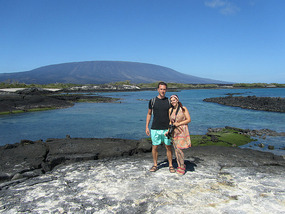

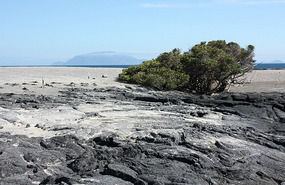
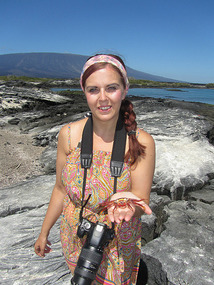
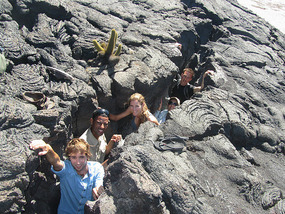
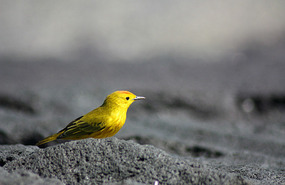
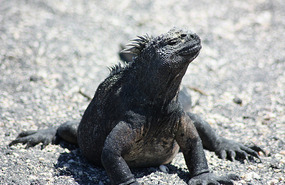
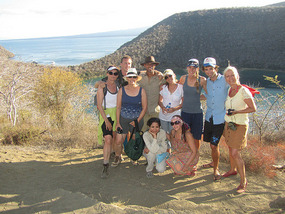
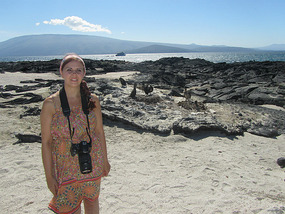
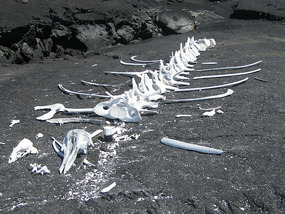




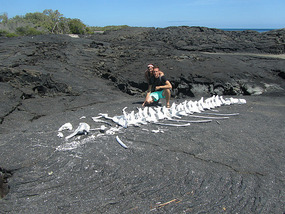




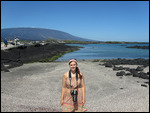


















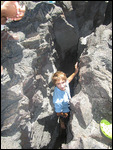


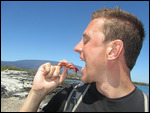

































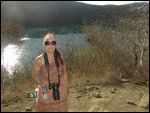
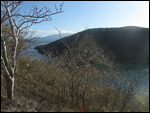
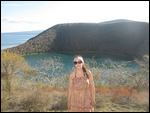

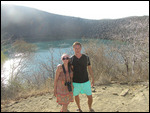
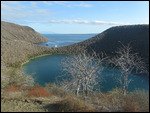
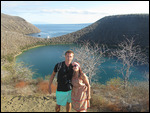
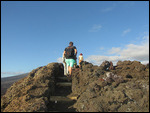
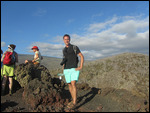
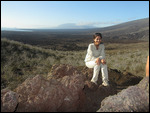
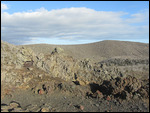
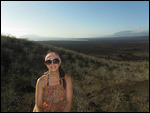
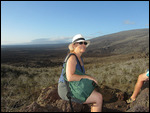
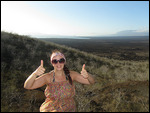
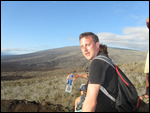






2025-05-22